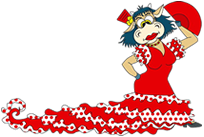-
Wiki
When El Fillo went shopping the singer realized that the coin wasn't perfect.
Then El Fillo decided to find Paquiro and he asked him: "Please, tell me, Master, was something missing to my singing...?" The bullfighter answered negatively and was very surprised with the question. The singer added: "Were my seguiriyas "cabales" - complete?"
Since then we called cabales the changed seguiriyas.












